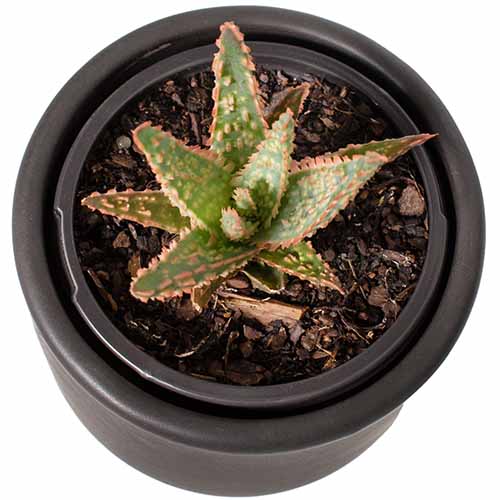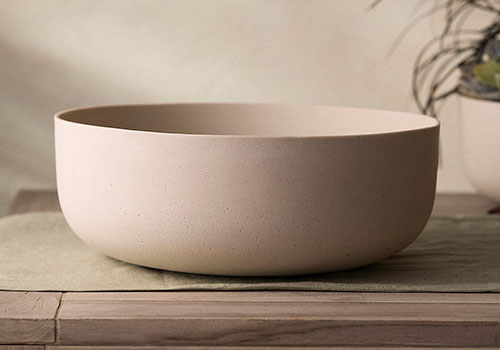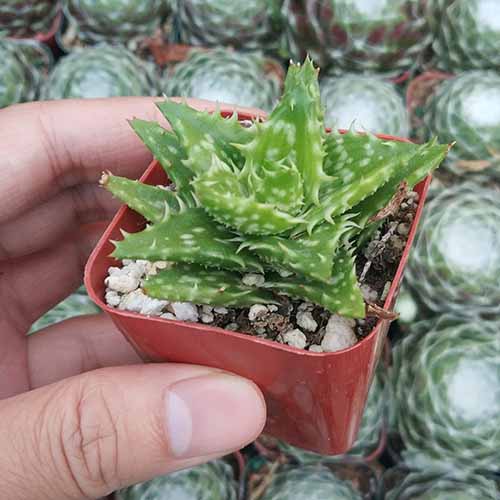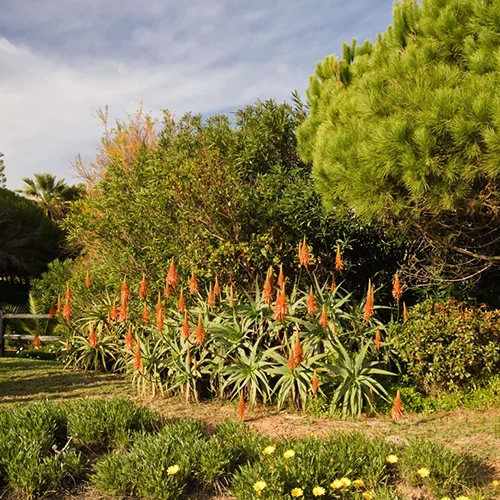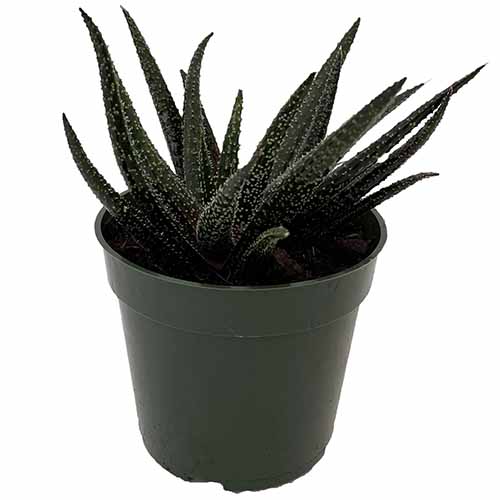Searching for a brand new succulent so as to add to your assortment? Or will this be the primary installment with many extra to return?
Aloe in all probability made the listing of choices you’re contemplating. Which is smart, since these are a number of the most beloved houseplants on this planet.
Selecting one would possibly look like a simple alternative at first – however it could in the end show to be a problem.
I’d wager that the primary member of the genus that springs to thoughts is the previous devoted, Aloe barbadensis, often known as aloe vera.
Certainly, this toothy succulent is the most typical and extensively distributed amongst house gardeners the world over.
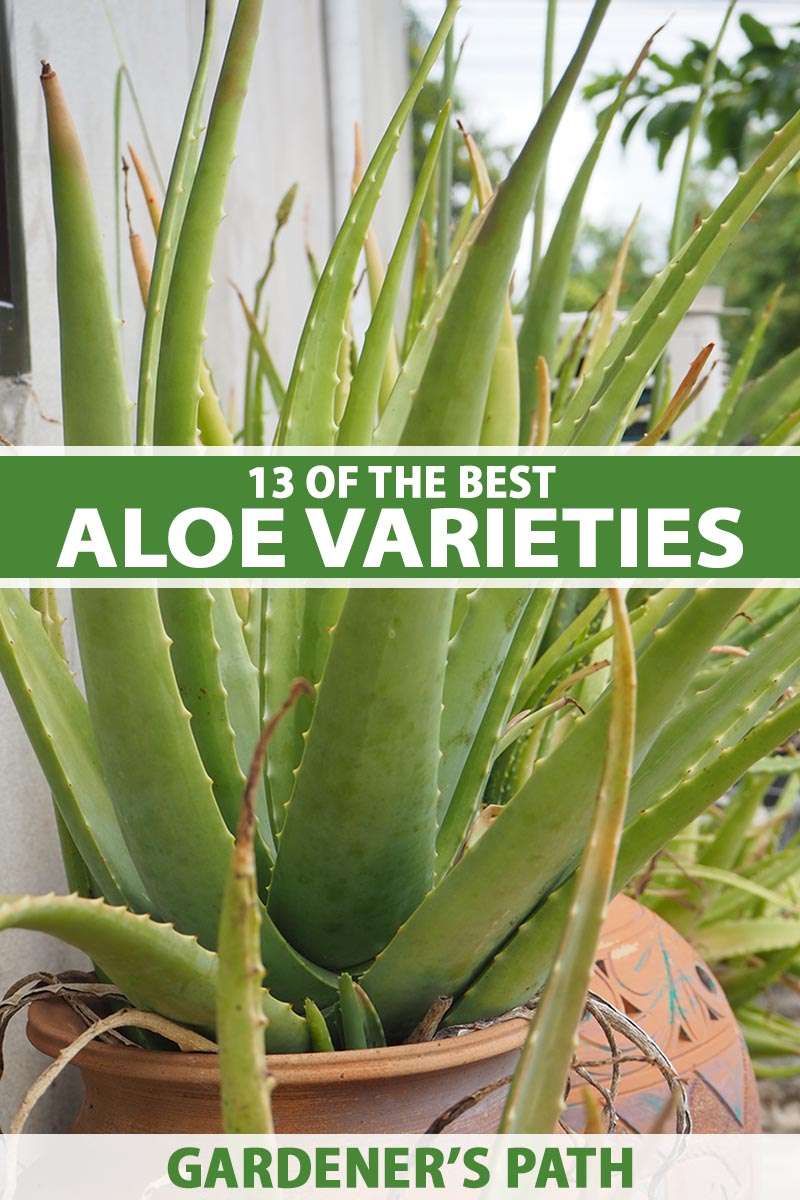
We hyperlink to distributors that can assist you discover related merchandise. In the event you purchase from one in every of our hyperlinks, we could earn a fee.
It’s usually chosen for out of doors rising in heat climates as a border or bedding plant or as a part of a succulent backyard, or it could be cultivated indoors, potted in containers.
In the event you’re solely accustomed to this frequent selection, I’m about to blow your thoughts.
Maintain onto your hats, as a result of there are effectively over 400 identified species within the genus, with extra nonetheless being found!
A few of them stay underneath the radar as a result of they’re unusual in cultivation, uncommon, or have very totally different progress habits from the standard aloe varieties, which makes them unusual decisions for the house gardeners.
Among the many better-known varieties, there’s fairly a range out there relying in your rising zone and area necessities.
Some crops generally known as aloe have additionally been reclassified by botanists lately, they usually now technically belong to totally different plant genera.
We’re going to try 13 beautiful varieties to organize you for fulfillment as a house gardener or houseplant fanatic.
Get able to construct a bona fide aloe obsession, identical to that of a few of our writers right here at Gardener’s Path, as a result of I’ve gathered an inventory of the preferred species and cultivars to think about.
Let’s get began!
13 Favourite Aloe Varieties
You might spend weeks studying about all the species, cultivars, and hybrids on the market right now!
Our information to the several types of aloe offers a breakdown of the assorted progress habits and classifications of those crops.
This roundup gives only a small sampling of the perfect varieties to decide on for indoor or out of doors rising.
In the event you’re a fan of out-of-the-ordinary crops, the specimen you select could possibly be extra attention-grabbing than the most typical of the genus.
In fact, there’s nothing fallacious with selecting the previous standby, aloe vera – and in case you do determine to do this, we have now a whole information that can assist you develop your personal aloe vera.
In the event you’re planning to buy one, head on over to Quick Rising Bushes the place you will discover crops in one-gallon containers.
In any other case, let’s spend somewhat time getting higher acquainted with some extra distinctive decisions.
1. Cape
A. ferox, often known as Cape or bitter aloe, is likely one of the showier choices.
The blue-green leaves are organized in a rosette sample, and are sometimes tinged with purple or rose, with purple or deep blue-green marginal tooth.
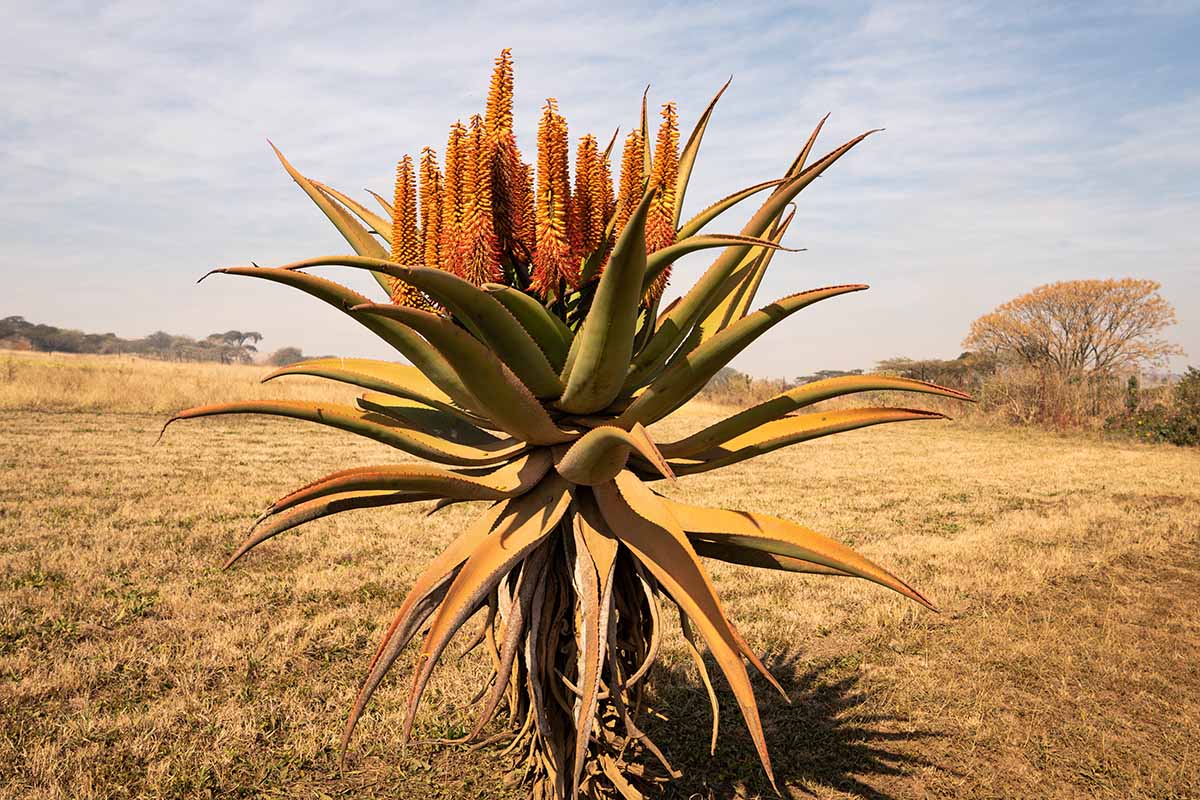
It’s additionally a bit toothier than different varieties, with small spines showing on interior and outer leaf surfaces in youthful crops. As they mature, they have a tendency to lose a few of their floor spines as they outgrow the hazard of grazing close to floor degree.
Usually confused with tree aloe species, A. ferox kinds a single trunk and sports activities red-orange inflorescences that may attain as much as two ft above the crown of foliage.
The leaves are decurrent, rising instantly from the higher portion of the trunk, with no stems or branches.
The full top at maturity for this species can measure effectively over 10 ft, so it is a specimen finest fitted to out of doors rising. Crops may be began in containers, however will possible want common repotting till they ultimately turn out to be too giant for this to be handy.
This South African native wants a heat, arid atmosphere and full solar for finest outcomes.
USDA Hardiness Zones 9 to 11 are supreme, however within the warmth of summer season, this species will profit from safety to supply some shade.
2. Christmas Carol
‘Christmas Carol’ is a hybrid cultivar with darkish orange or purple spots and edging on its spiky, succulent leaves. When considered from above, the plant has a star-shaped look.
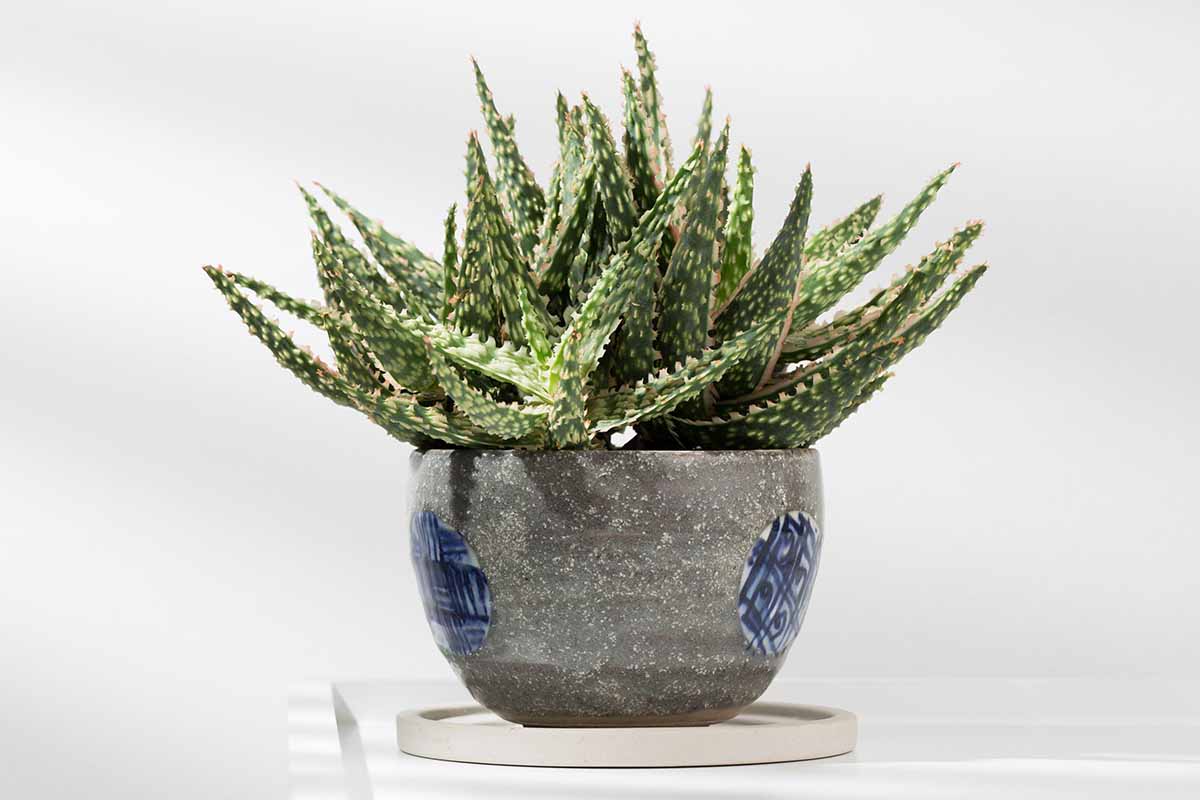
The coloration is extra pronounced when the plant is uncovered to full solar. When grown open air in Zones 9b to 11, reddish-pink flowers could seem, although these are unusual in crops stored indoors.
This cultivar was bred by hybridizer Kelly Griffin, utilizing ‘Doran Black,’ described beneath, as one of many guardian crops.
With a mature top and width of simply eight to 12 inches, ‘Christmas Carol’ is right for rising in small areas open air, or in containers both indoors or out.
You’ll find ‘Christmas Carol’ out there from Walmart in four-inch pots.
And take a look at our information to discover ways to develop and take care of ‘Christmas Carol.’
3. Coral
A. striata, aka the coral aloe, options broad, gray-green succulent leaves with hints of purple on the sleek, spineless edges.

Refined darkish inexperienced vertical stripes operating alongside the size of the foliage present textural curiosity to the fleshy leaves.
This species is extra cold-tolerant than many aloe varieties, and may be grown open air in Zones 9 to 11. It’s possible you’ll want to supply winter safety within the extra northern elements of Zone 9.
At maturity, the rosettes can attain 18 to 24 inches tall and huge, and will produce offsets on the base, which may be dug up and transplanted.
When grown open air, mature rosettes can produce two- to three-foot tall flower stalks adorned with orangey-red blooms, offering a pop of colour to the water-wise backyard.
Prepared so as to add A. striata to your panorama? Crops Specific carries specimens in one- and five-gallon containers for transport to prospects in California.
4. Doran Black
One of the widespread hybrid aloe cultivars, ‘Doran Black’ reveals quick, flat, fleshy leaves of inexperienced to grey, though a pinkish tone is usually seen on the ends of the leaves.

The white sample of speckles or slashes is organized in stripe-like bands in some situations, however usually seems mottled. White marginal tooth line every leaf.
The undersides of the foliage normally have a bumpy texture that provides an much more distinctive look to this standout specimen.
Flowers could also be shiny or pale pink, rose, or coral. Word that flowering is extra frequent in specimens grown open air.
With an anticipated stature of not more than about eight inches, and a minimal unfold of 5 to eight inches, this hybrid is ideal for container planting. It additionally prefers much less gentle than some aloes and produces a rosy tone in occasions of drought.
In case your windowsill is a spot the place thirsty crops usually go to die, you would possibly give this one a go!
Need to set up ‘Doran Black’ in an out of doors xeriscape, rock backyard, or mattress? You are able to do so safely in USDA Hardiness Zones 10 to 11. In any other case, indoors it’s!
You should purchase ‘Doran Black’ in a three-and-a-half-inch pot from Planet Desert through Amazon.
5. Fan
Kumara plicatilis, or the fan aloe, has been reclassified as a consequence of its very totally different construction from most different aloes.
The Kumara genus solely consists of two identified species: Ok. picatilis and Ok. haemanthifolia.
I discussed earlier that that is my absolute favourite species on our listing. It’s such a peculiar, fascinating addition to the panorama, positive to attract oohs and ahhs, and questions from guests who’re equally fascinated.
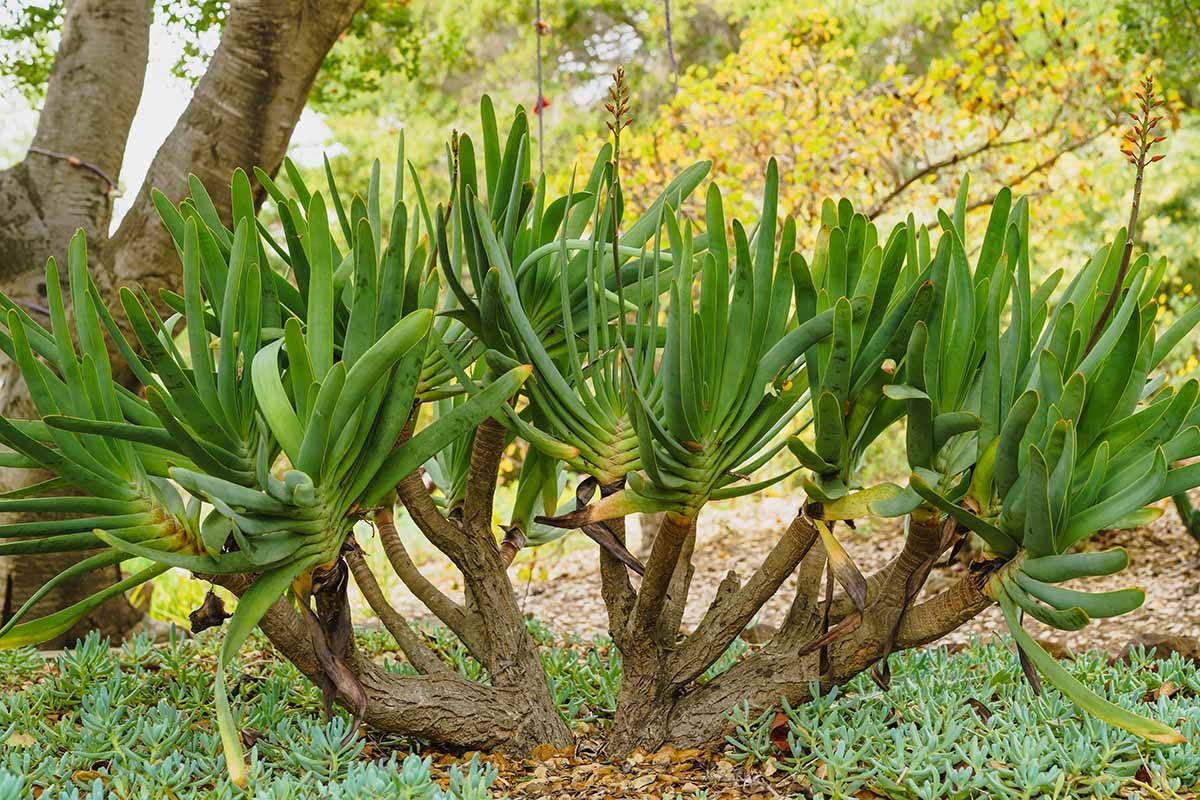
This species kinds a easy, grey, semi-woody trunk over time, lifting the jade-like followers of leaves up into an array that you just simply can’t assist however discover.
The trunks are inclined to department and fork over time, making a form akin to a naturally-occurring bonsai.
The followers can attain about 12 inches in size, and matched with the peak of the trunk, this specimen can attain six to eight ft in top at maturity.
And if that isn’t sufficient to show heads, racemes of coral to orange actually pop towards the muted, blue-green colour of the followers.
Younger specimens could seem extra just like different aloes, with leaves that develop from a brief stem, reaching upward in clusters.
It may take a number of years for a trunk to develop since this species grows slowly, however this will present a grace interval for container rising in case you select to start out one in every of these in a pot.
Keep in mind, nevertheless, that container-grown crops will must be transplanted after just a few years to an acceptable place within the panorama.
This location ought to be chosen fastidiously as a result of this species can stay for many years.
Add fan aloe to your yard or backyard in Zones 9 to 11, however make sure to hold an eye fixed out for chilly snaps that dip beneath about 20°F, as a result of this species will not be chilly tolerant.
Heat, arid areas are most well-liked for out of doors rising.
6. Brief-Leaved
In the event you’re searching for a specimen that reaches 10 to 12 inches in top, and that may fill in area as a floor cowl, short-leaved aloe (A. brevifolia) would possibly do the trick.
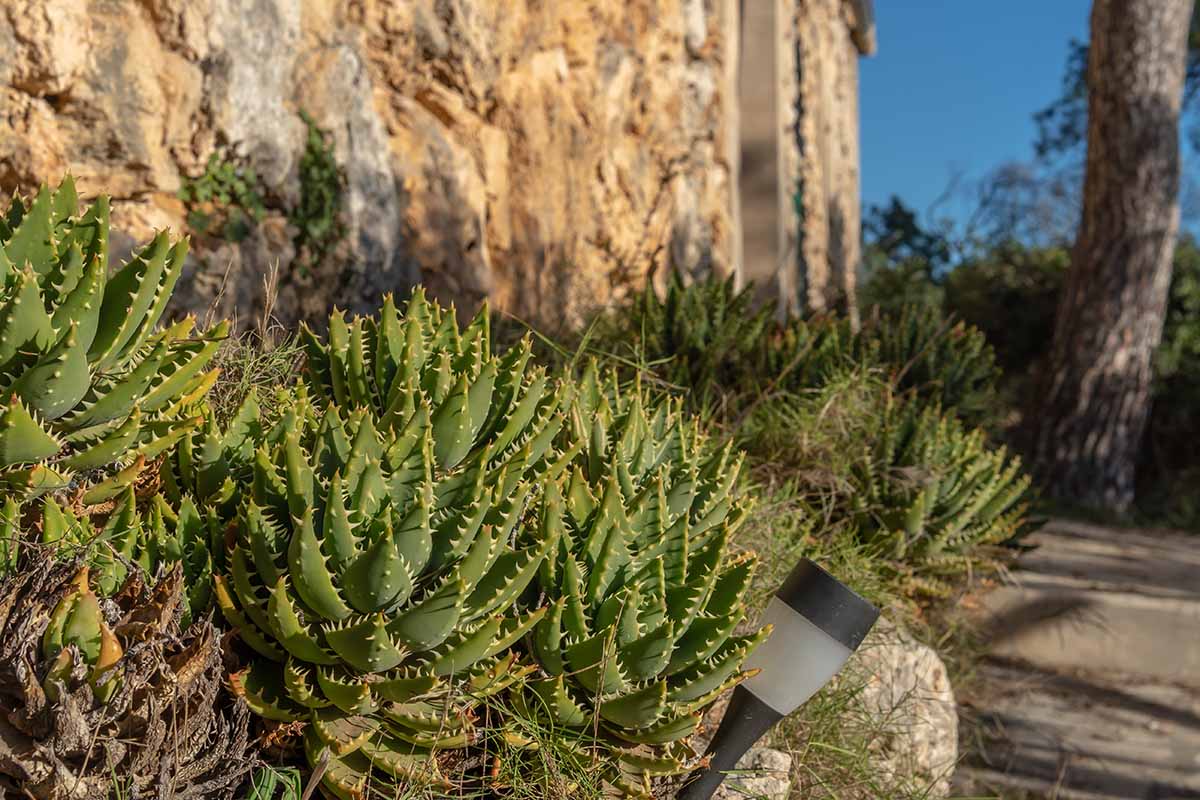
This species has inexperienced to burgundy coloration and thick, stout, toothy leaves. Its blooms are red-orange and distinction properly towards its refined foliage, making it engaging sufficient to make use of as a focus. In shiny daylight, the foliage can typically flip a superb flame purple.
This species typically kinds mounds that make for a beautiful presentation in a large, shallow basin.
Pair it with different succulents, equivalent to string of pearls or hens and chicks, for a whimsical look.
Dense mounds can shortly turn out to be overcrowded. Fortunately, separating pups or offshoots is fairly easy – you will discover directions in our information to separating aloe pups for propagation.
Typically known as the crocodile plant, this compact kind fares finest in USDA Hardiness Zones 10 and 11 as an out of doors planting.
You’ll find crops in two- or four-inch plastic or clay pots from the DH7 Enterprise Retailer through Amazon.
7. Spiral
For an intricate, seemingly mystical addition to your own home or backyard, spiral aloe (A. polyphylla) is a prime choice!
This superb specimen encompasses a extremely symmetrical association of quick, triangular leaves that wind in an ideal spiral rosette type.
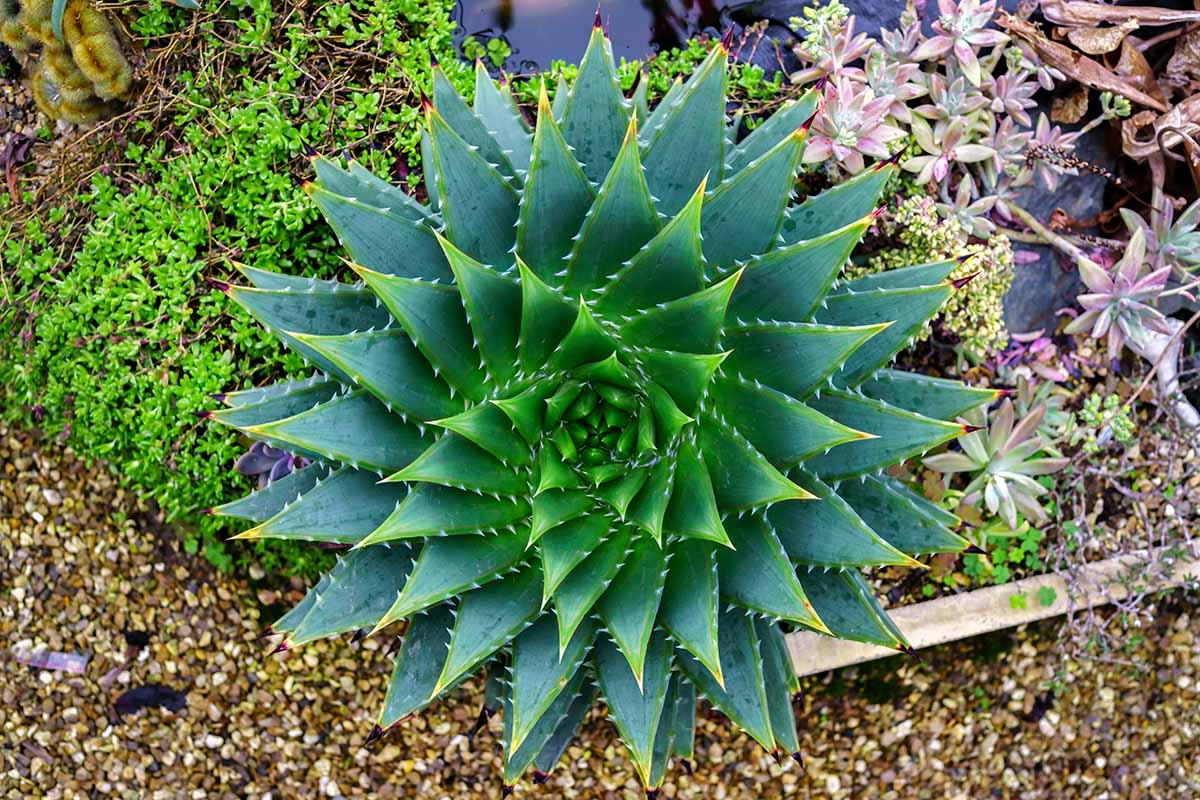
The deep inexperienced to blue-green tone of the foliage, typically tipped with rose, purple, or a contact of yellow, is focal-point-worthy by itself.
Couple that with the salmon to orange inflorescences it produces and also you’re positive to be mesmerized.
This South African native grows to a modest 12 inches in top at maturity, with a beautiful mounding behavior that spreads to 12 to 24 inches.
An accelerated progress price is regular with this species, which regularly reaches its mature measurement at about 5 years of age.
However its quick progress is sadly no match for overcollection within the wild as a consequence of its reputation, and this species seems on the endangered species listing in its native vary.
Be sure you buy from a good nursery and go away the remaining wild specimens to nature.
Not like heat-loving aloes, A. polyphylla prefers the cooler temperatures in Hardiness Zones 7 to 9.
Rising in hotter areas means offering extra shade and mulched soil to forestall overheating. Or, carry it indoors as a houseplant, potted in a large, low container for stability.
8. Noticed
A. buhrii is a stemless selection often known as Elias Buhr’s aloe, so named in 1971 by botanist John Lavranos to honor the farmer who first collected a specimen from the Northern Cape Province of South Africa.

It’s a compact grower, reaching not more than about one foot tall and two or three ft huge at maturity, however what it lacks in measurement it makes up for in type and colour.
The thick, inexperienced leaves usually show burgundy, purple, or reddish tones, offering a pleasant pop of colour alongside a walkway or when coupled with much less vibrantly coloured succulents.
Along with the typically brightly toned foliage, this specimen sends up inflorescences of shiny coral or orange in clusters comparable in association to these of sedum.
Plant this selection, which is most colourful in shiny daylight, open air in Zones 9 to 11, or develop it indoors in containers year-round.
This species is hardy to about 30°F for brief durations of time, but when your area experiences long-term freezes within the winter, crops will both must be protected or moved indoors.
9. Tiger
Tiger aloe, or Gonialoe variegata (previously A. variegata), has been reclassified and is now not a member of the Aloe genus.

Containing solely three species – G. dinteri, G. sladeniana, and G. variegata – crops within the Gonialoe genus are characterised by striped or speckled foliage, with flat or V-shaped leaves usually nested one inside the opposite.
They produce racemes with inexperienced to pink stems and pink, coral, or orange flowers every with a bell-shaped construction.
Within the case of G. variegata, or partridge aloe because it’s additionally typically referred to as, sturdy, distinctive stripes of deep inexperienced and white alternate to create a sample that bears a resemblance to tiger stripes or partridge feathers.
White margins of fantastic tooth line every leaf. This can be a really eye-catching houseplant.
Other than its colour and sample, the modest measurement of the specimen additionally lends itself completely to indoor rising.
Prime top at maturity ranges from 12 to 24 inches, however due to the gradual progress price of this species, it may possibly take 5 to 10 years to achieve this measurement.
Not like a number of the varieties on our listing, this one doesn’t thoughts barely decrease ranges of sunshine. Outdoor, it may possibly tolerate temperatures in Hardiness Zones 9 to 11.
Beneath about 40°F, it’s finest to cowl and shield out of doors plantings from chilly harm, or transfer potted specimens indoors to security.
In the event you’re contemplating this species however want extra particulars on planting and caring for it, take a look at our information to rising tiger aloe earlier than you choose one up.
10. Tiger Tooth
Compact, cute, and typically brightly coloured, A. juvenna, or tiger tooth aloe, is a favourite amongst houseplant dad and mom.
This species sports activities quick, white-speckled inexperienced leaves that typically change to a golden tone.
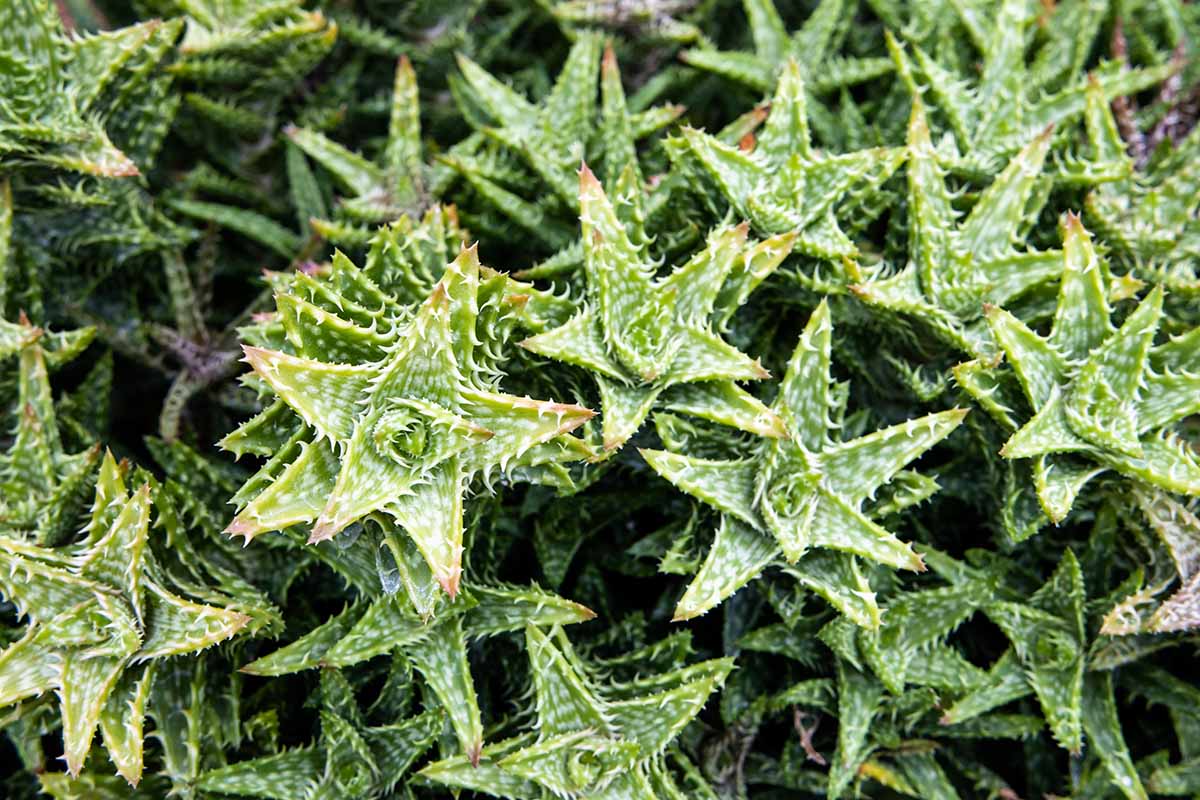
A fairly prickly wanting selection, you’ll discover tooth alongside all margins and typically on the interior and outer surfaces of the quick, triangular leaves – however this species is menacing in look alone. The spines are versatile and infrequently prick the pores and skin.
Pokes apart, mature specimens not often attain greater than about eight inches in top at maturity.
Preferrred rising situations encourage offshoots to develop, which may type a dense cluster of columnar crops over time.
This Kenyan native is finest planted indoors in pots the place it has room to unfold, if out of doors situations fall outdoors the vary of Zones 9 to 11.
Do that fiber bowl planter from Terrain, with a 16-inch huge opening that may present room for offshoots to type.
As an out of doors planting, you’ll need to hold an eye fixed out to verify it’s not spreading additional than supposed with runners and pups.
Discover tiger tooth crops out there in two-, four-, or six-inch pots from Succulents Depot through Walmart.
11. Torch
The shrub-like A. arborescens makes fairly an impression within the panorama!
Tufts of inexperienced, toothed leaves develop atop a branched, low-growing trunk, with red-orange racemes rising like Roman candles within the spring and summer season.
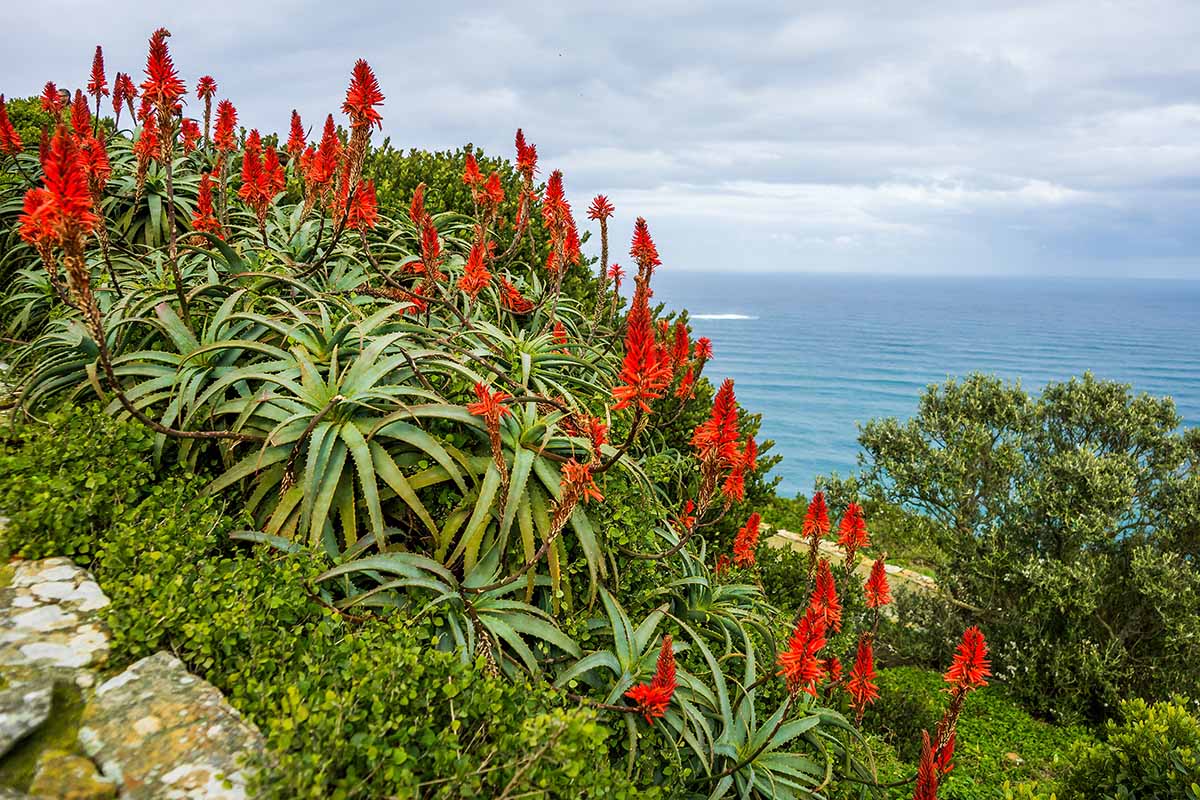
Zones 9 to 11 are most acceptable for this species, which tolerates seasonal lows within the 25 to 30°F vary.
In cooler zones, mulching and protecting previous to the onset of chilly temperatures might help to forestall chilly harm.
Small, younger crops may be grown in containers till they turn out to be too giant. Mature crops, nevertheless, can tower overhead at six to 10 ft in top with the same unfold.
They don’t develop quick, however that is one thing to keep in mind in case you don’t have a spot or acceptable rising situations for them open air.
Residents of California can discover specimens in five- and 15-gallon containers on the market at Crops Specific.
12. Tree
Aloe bainesii has been reclassified as Aloidendron barberae and moved to the Aloidendron genus, often known as the tree type aloes.
Different members of the genus are generally known as quiver bushes. At maturity, these African natives show clusters of succulent leaves atop single or branched trunks.
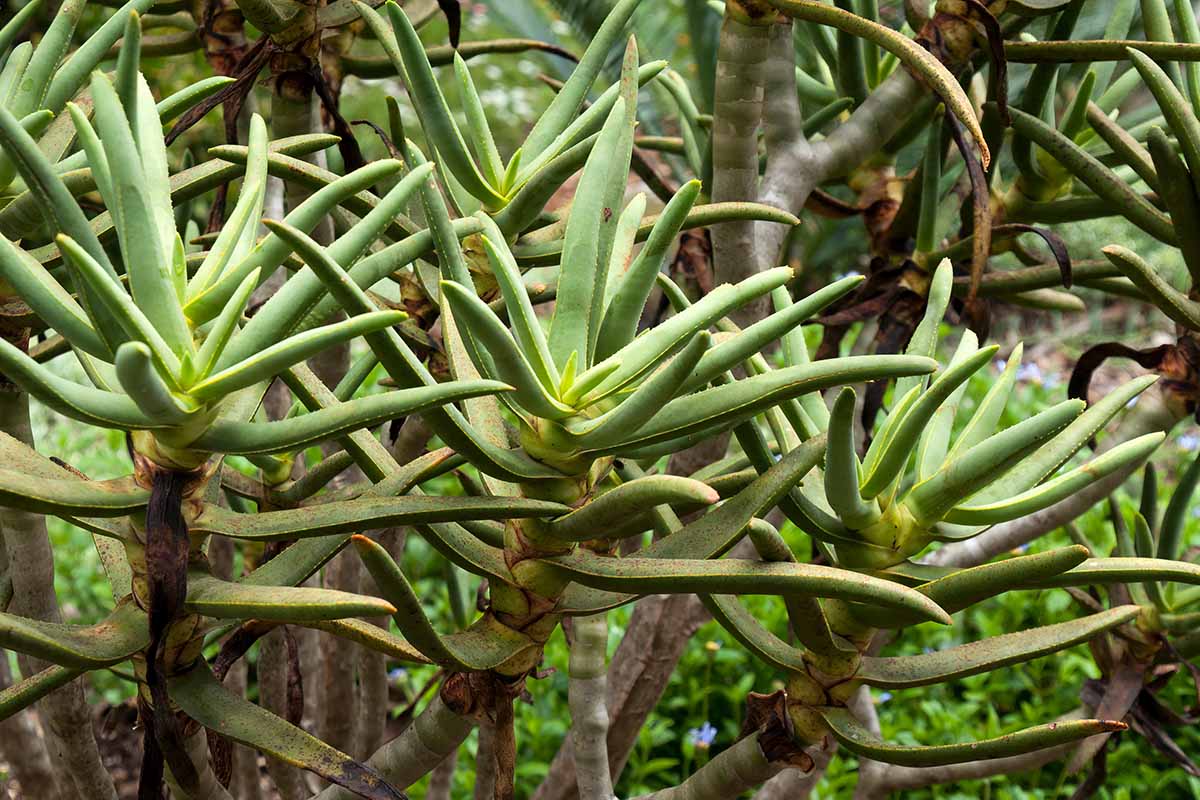
As with different tree type specimens, this species is a local of Southern and Central Africa. On this area, crops expertise excessive warmth, sturdy daylight, and frequent drought.
In the event you’re planning to carry one house, Hardiness Zones 9 to 11 are appropriate for out of doors cultivation, however seasonal low temperatures in these areas can nonetheless pose a difficulty for immature bushes.
Juveniles will not be frost tolerant and safety will probably be obligatory.
Tree aloe grows slowly, reaching 30 to 60 ft at full top. As you possibly can think about with a plant of this measurement, indoor rising could be difficult past the primary few years of life.
When you have an out of doors location that’s appropriate, crops may be began in pots to be introduced indoors for the winter, and transplanted into the bottom earlier than they develop to be too giant to govern.
13. Twilight Zone
Whereas most members of the Aloe genus exhibit toothed leaf margins and will typically produce spines alongside the floor of their leaves, hybrid A. haworthioidies x Gasteria carinata ‘Twilight Zone’ reveals a particular texture as effectively.

As a substitute of spines, the leaves of this Gasteraloe hybrid have what seems to be a coating of tough, white, granular bumps. Deep, emerald inexperienced coloration underneath the grainy white sample provides an attention-grabbing distinction.
The thick, practically tubular leaves develop straight and upright, reaching for the solar at a mature top of round 12 inches.
The moniker ‘Twilight Zone’ was assigned by Kelly Griffin, who develops hybrid varieties for Altman Crops.
It was chosen to pay homage to the opening credit of Rod Sterling’s widespread sci-fi present “The Twilight Zone,” which depicts stars in area.
In the event you’re out there for a houseplant that’s straightforward to take care of, small in stature, and enjoyable to pair with different succulents and cacti with low water wants, this can be your finest wager.
Preferrred out of doors rising situations for ‘Twilight Zone’ fall inside Zones 9 to 11, though publicity to temperatures underneath about 50°F shouldn’t be extended.
If potential, develop this hybrid as a container plant and transfer it indoors when a chill touches the air.
Crops can be found in four-inch pots from Hirt’s Backyard through Walmart.
Aloe Affection or Dependancy?
I formally allow you to off the hook in case you’ve reached the tip of this roundup with an inventory of must-have crops. Nobody might blame you.
There’s no purpose to really feel responsible when there are so many beautiful species, hybrids, and cultivars out there.
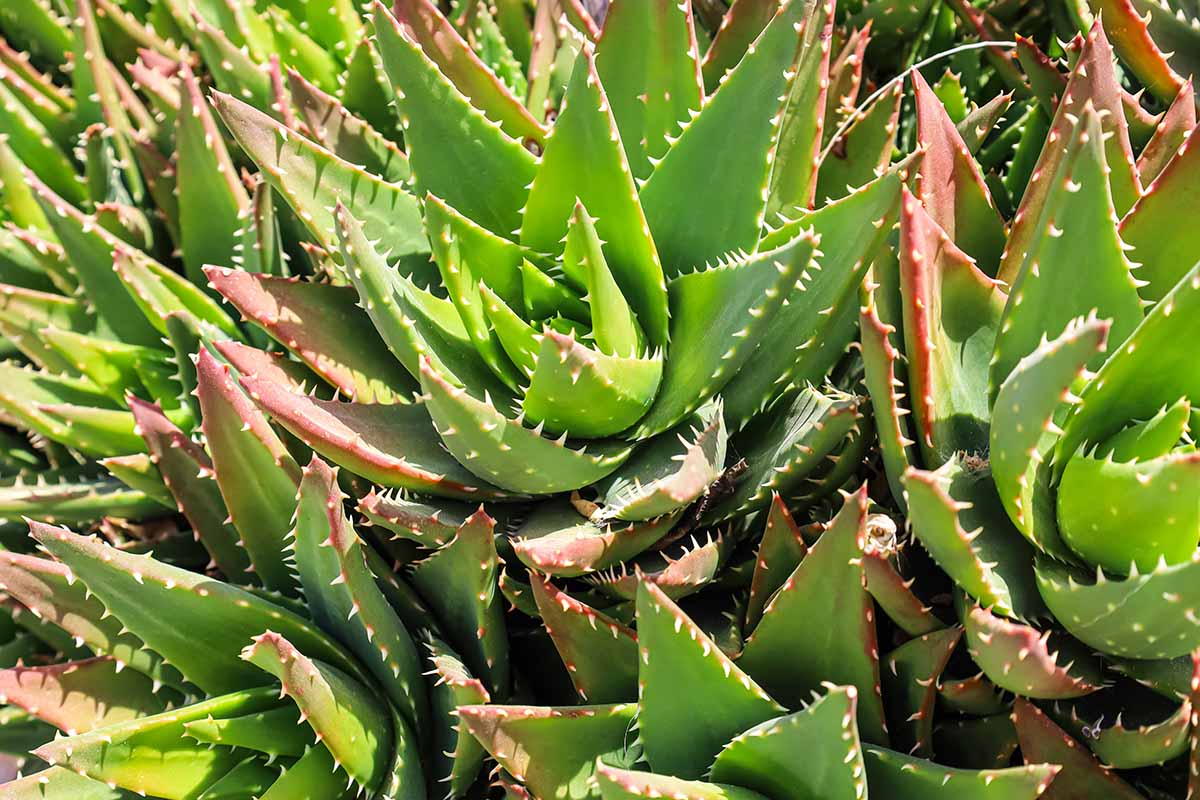
Personally, I might a lot fairly have a home stuffed with crops, particularly succulents like these beautiful aloes, than virtually the rest.
Do you reside in a local weather the place out of doors rising is a risk? Or are you going to carry one in every of these pretty varieties house to develop as a houseplant?
Irrespective of the place you propose to put yours, we’d like to see images of it – be happy to share within the feedback beneath! And make sure to inform us about any species or cultivars that we could have missed so different readers have much more choices to think about.
In the event you’ve loved this roundup, take a look at these titles subsequent. You’ll be an aloe specialist very quickly in any respect!


